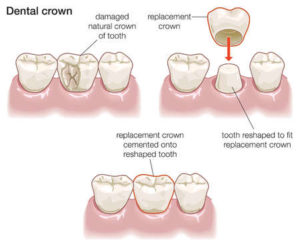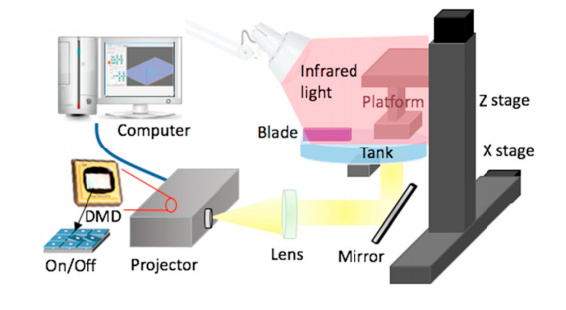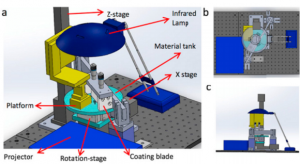 Each year in the US, about 40 million provisional teeth restorations take place, and the temporary bridges and crowns used in these procedures are necessary to protect a patient’s teeth until the permanent hardware is ready to be attached. These dental interventions aren’t cheap, but using 3D printing to manufacture the bridges and crowns can help to lower the cost.
Each year in the US, about 40 million provisional teeth restorations take place, and the temporary bridges and crowns used in these procedures are necessary to protect a patient’s teeth until the permanent hardware is ready to be attached. These dental interventions aren’t cheap, but using 3D printing to manufacture the bridges and crowns can help to lower the cost.
Most permanent dental bridges and crowns are made with materials like ceramics, metals, or other strong composites, and take around two weeks to create, though this can also be reduced by using 3D printing. However, no matter which manufacturing method you use, dental patients need temporary restorations, typically made of plastic, while waiting for their permanent devices to be ready to protect their teeth and keep them from shifting around. These are either made with shells that fit the original teeth, or built from scratch with molds, and will need to be trimmed a few times in the patient’s mouth before they’re cemented. Even with the trimming, these temporary restorations can break due to daily use, and a new one must be fabricated, which just seems to me like a colossal waste of time, money, and effort.
Not to worry – digital design technologies, like 3D printing, are currently being employed to make this practice easier and less time-consuming. A group of researchers from the University of California, Los Angeles (UCLA) recently published a paper, titled “3D Printing Temporary Crown and Bridge by Temperature Controlled Mask Image Projection Stereolithography,” in the Procedia Manufacturing journal that discusses using an SLA 3D printing method to manufacture these temporary teeth restorations.
The abstract reads, “Traditionally, the fabrication of temporary teeth restorations must go through multiple processes such as moulding, curing and post finishing, which requires extensive expertise of dentists. In addition, the handmade temporary restorations are usually unable to precisely fit the patient’s teeth due to limited formability of material. To address the problem, a three-dimensional (3D) printing technology named temperature controlled mask image projection based stereolithography (TCMIP-SL) is presented for dental materials in this paper, with aim to build customized temporary crown and bridge quickly for its use in dental offices. We first studied the photo-polymerization performance of commercial materials that are commonly used in dental industry. Then we discussed the temperature effect on curing performance and rheology of dental composite material. Based on the studies, we further developed our TCMIP-SL process by integrating a material coating system with controllable heating, so that the coated thin film of dental composite material can be selectively cured using high resolution patterned light beam. Several test cases are performed to demonstrate the TCMIP-SL process can 3D print high viscous temporary crown material with fast speed and high resolution.”
Mask image projection-based stereolithography (MIP-SL) processes use a set of horizontal planes to slice a 3D object, and each slice is converted into a 2D mask image. Then, a 2D patterned light beam, which is controlled by a digital micromirror device (DMD), is projected on the surface of a photocurable material, which is then cured layer by layer to build the 3D object – in this case, a temporary dental crown or bridge. This process is great for 3D printing macroscale model with hundreds of layers, and composite materials like multifunctional ceramic have been successfully fabricated with MIP-SL.
Unfortunately, the technology requires a special blade to achieve a thin, uniform coating of highly viscous materials, which can majorly affect the efficiency of the process.
“Polymer based composite provisional dental materials, which provide exceptional strength, flexibility, and abrasion resistance, are widely used to fabricate temporary restorations in dental industry; however, the flowability of most dental composite materials is poor due to its high viscosity and may bring difficulty to 3D printing processes,” the researchers wrote.
Temperature can affect the viscosity of polymer-based composite materials, as the viscosity will decrease when the temperature rises.
“In the paper, we extend our previous work on the ceramic-based MIP-SL process to the temperature controlled MIP-SL,” the researchers explained in the paper.
“To optimize the process parameters, we studied the rheology of photo-curable polymer based composite material at different temperatures. Based on the result, we further investigated the curing performance of photo-curable polymer based composite materials under a large range of temperature in order to identify the appropriate temperature setting. Furthermore, a new rotary movement design was implemented in the TCMIP-SL process to continuously spread viscous composite material into uniform thin layer.”
The team’s TCMIP-SL technology is able to 3D print temporary dental bridges and crowns at a high resolution and speed.
“The TCMIP-SL process shows significant strength over the existing 3D provisional restoration fabrication methods that are used for dentists,” the researchers concluded. “We believe the developed TCMIP-SL process has prodigious potential and extensive foreground in variety of fields ranging from high viscous multi-functional ceramic fabrication to composite material fabrication.”
Co-authors of the paper are Xiangjia Li, Benshuai Xie, Jie Jin, Yang Chai, and Yong Chen.
Discuss this story and other 3D printing topics at 3DPrintBoard.com or share your thoughts below.
Subscribe to Our Email Newsletter
Stay up-to-date on all the latest news from the 3D printing industry and receive information and offers from third party vendors.
You May Also Like
Precision at the Microscale: UK Researchers Advance Medical Devices with BMF’s 3D Printing Tech
University of Nottingham researchers are using Boston Micro Fabrication‘s (BMF) 3D printing technology to develop medical devices that improve compatibility with human tissue. Funded by a UK grant, this project...
3D Printing Webinar and Event Roundup: April 21, 2024
It’s another busy week of webinars and events, starting with Hannover Messe in Germany and continuing with Metalcasting Congress, Chinaplas, TechBlick’s Innovation Festival, and more. Stratasys continues its advanced training...
3D Printing Webinar and Event Roundup: March 17, 2024
It’s another busy week of webinars and events, including SALMED 2024 and AM Forum in Berlin. Stratasys continues its in-person training and is offering two webinars, ASTM is holding a...
3D Printed Micro Antenna is 15% Smaller and 6X Lighter
Horizon Microtechnologies has achieved success in creating a high-frequency D-Band horn antenna through micro 3D printing. However, this achievement did not rely solely on 3D printing; it involved a combination...

































